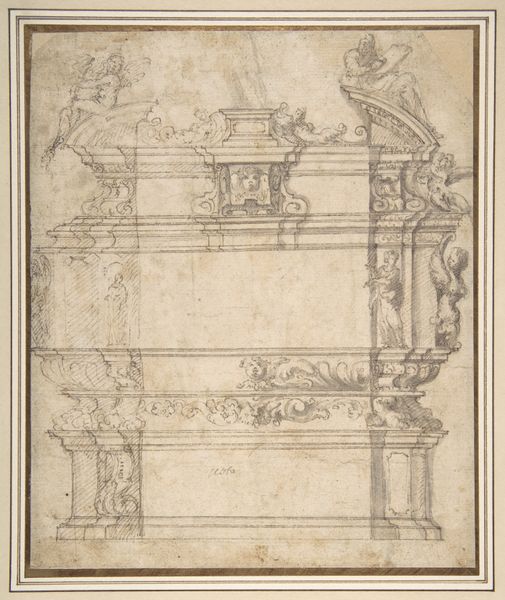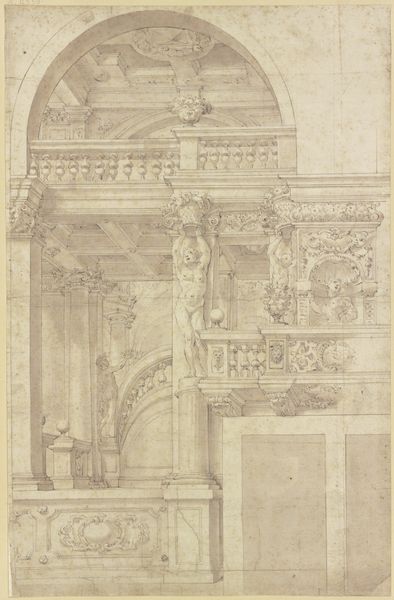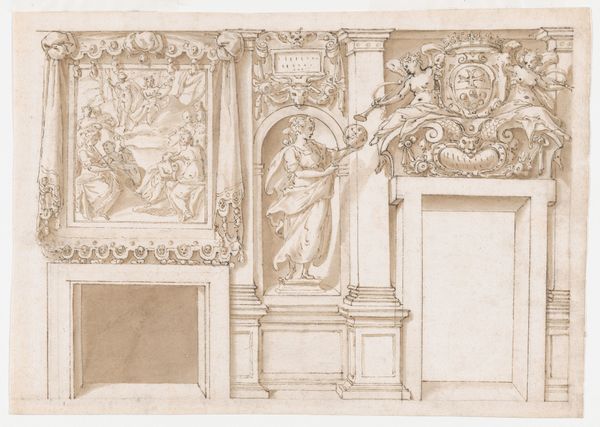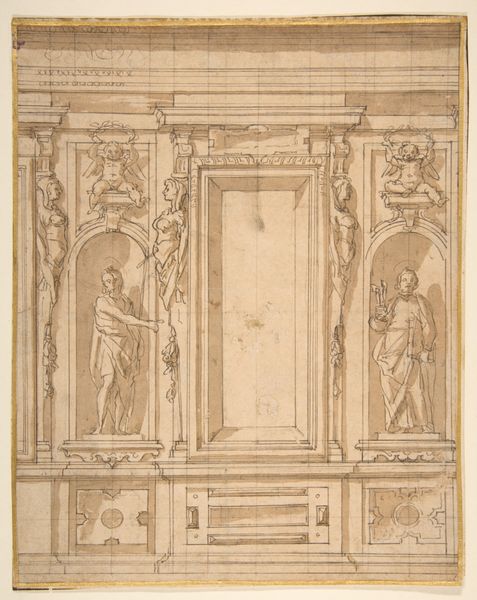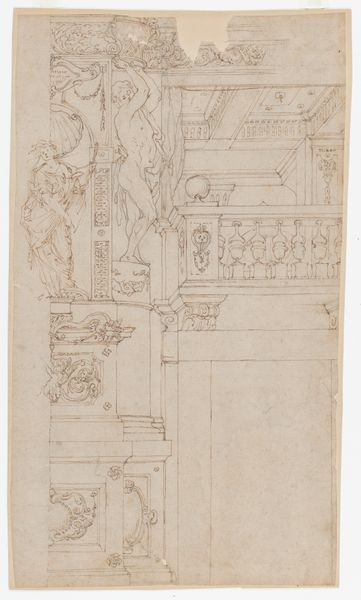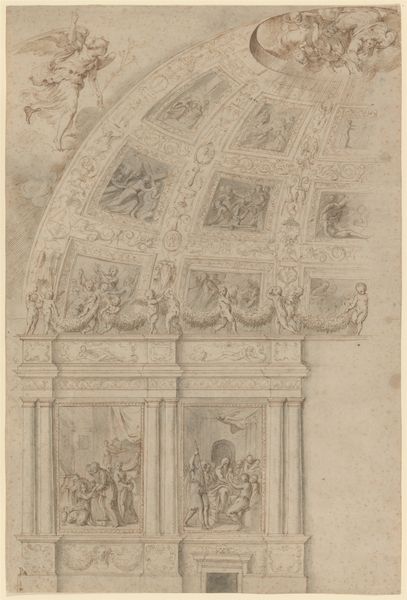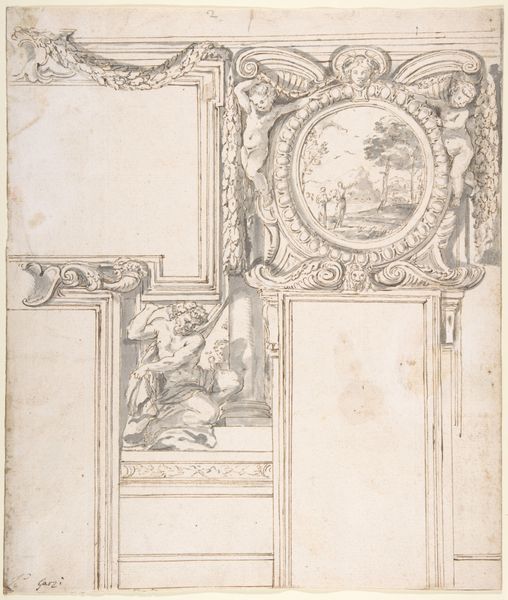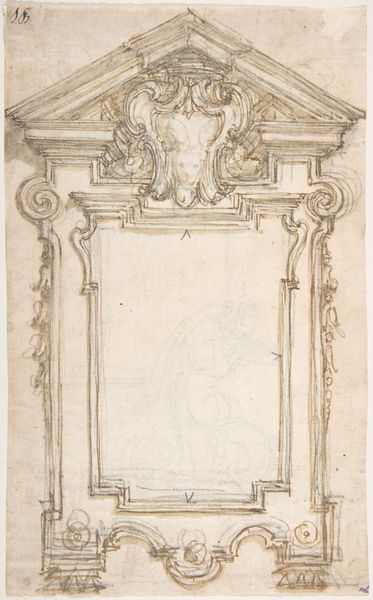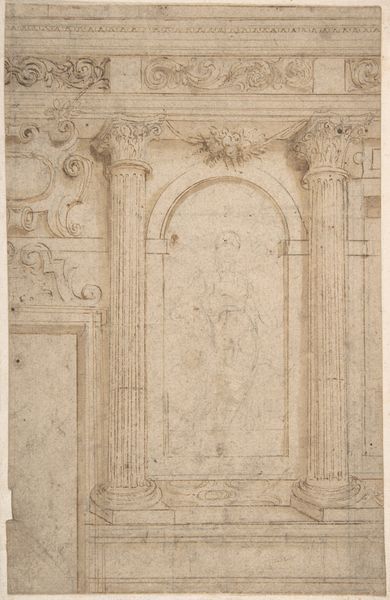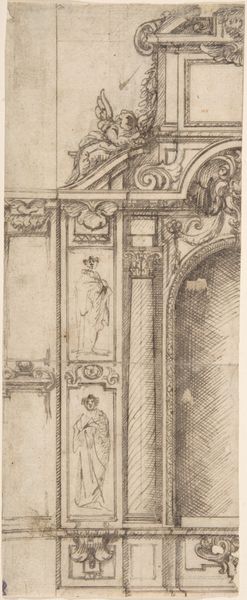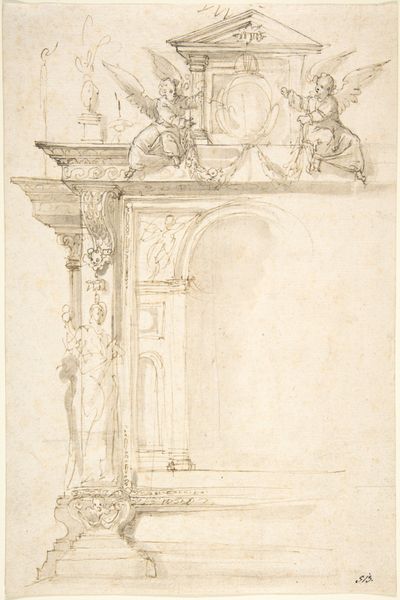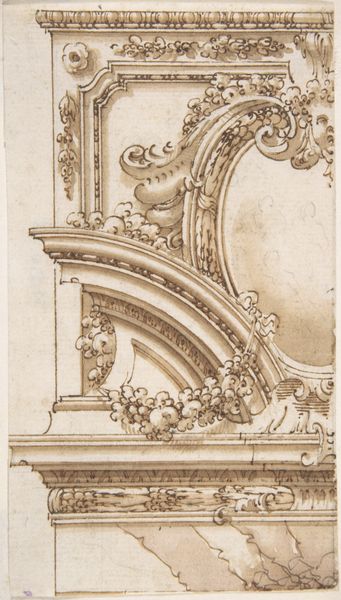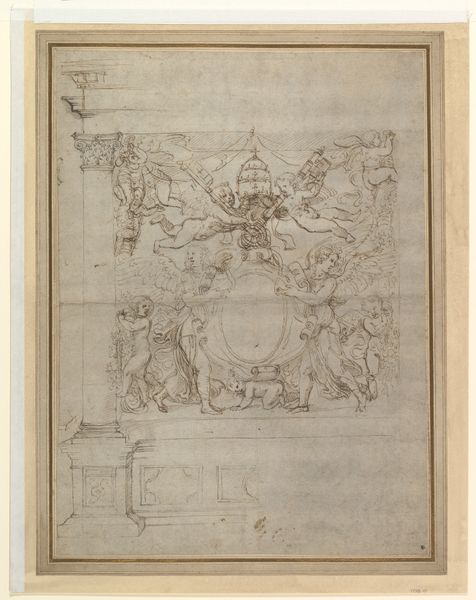
drawing, pencil, architecture
#
architectural sketch
#
drawing
#
pencil sketch
#
form
#
11_renaissance
#
pencil
#
italian-renaissance
#
architecture
Dimensions: sheet: 4 13/16 x 3 13/16 in. (12.2 x 9.7 cm)
Copyright: Public Domain
Editor: Here we have "Design for a Ceiling," an anonymous pencil drawing from around 1515-1525, currently housed at the Met. It strikes me as a glimpse into the planning stages of some grand architectural project, almost like a behind-the-scenes peek. What elements stand out to you in this sketch? Curator: I am drawn to consider the materials and the labor involved, even in this nascent design stage. It speaks to the burgeoning material culture of the Renaissance, where patrons commissioned ambitious projects not just as expressions of wealth, but as investments in civic identity. This drawing wasn't merely art; it was a tool in the construction of power, influencing perception and shaping the physical environment. Editor: So, you see the sketch itself as part of the overall production? Not just a preliminary idea, but an active step? Curator: Precisely. Consider the physical act of drawing – the anonymous artist carefully rendering details, likely responding to specific directives and the constraints of available materials like pencil and paper. We often forget that even "fine art" emerges from a process, intertwined with craft, materiality and societal influence, such as class and economic structure. Were there apprentices who might have worked on sections of this drawing? How does that change our understanding? Editor: It is fascinating to consider the hands involved, the potential collaboration, and the resources needed. It shifts my perspective from the idealized image of the Renaissance artist to the realities of workshop practice. I guess, in my mind, how readily available and useful the architectural drawing would become as a visual commodity. Curator: It prompts us to think about the drawing as a step within material social and architectural project. Its value lies not only in its aesthetic qualities but also in its function and what this can tell us. Editor: Definitely something to consider: this design as both a vision of material and marker of material, culture and economy!
Comments
No comments
Be the first to comment and join the conversation on the ultimate creative platform.
